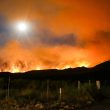How local government agencies can protect communities from severe weather
A record number of heat waves scorched the U.S. this past summer, and recent reports show that weather occurrences are only getting worse. Longer and more frequent severe weather, such as heat waves, major hurricanes, wildfires and heavy snowstorms, bring harsh consequences, including power outages, illness and even death. Natural disasters caused nearly $100 billion worth of damage in 2020, piling on to what was already a very hard year.
To prevent these tragedies in the future, public safety and emergency management teams have to learn lessons from this past year’s heat waves. Fortunately, these takeaways also apply to natural disaster management. Investments today that improve severe weather response will translate to a wide range of climate issues that we’ll inevitably face in the coming decades.
Here are three best practices that local government agencies can follow in their pursuit of severe weather resiliency.
Leverage data and know who your vulnerable residents are
Heat waves are more dangerous from a public health perspective than many realize. It’s easy to dismiss the idea that a hot day could cause health problems, but the reality is that heat-related mortality is a serious issue, and it’s only becoming more prevalent. Hundreds of people across Washington, Oregon and British Columbia died over a week-long span this summer from heatstroke and other heat-related complications. The Pacific Northwest heat wave revealed just how harmful these crises can be, especially for people who are socially isolated or live in homes with little cooling capacity.
To prevent the unnecessary loss of life during heat waves, thought leaders and safety officials have to know who in their jurisdictions are most at risk and educate those people on the dangers of extreme weather. Only then can they proactively mitigate the loss of life, create awareness and deliver aid when it’s needed most. The challenge here is identifying these people ahead of time and then gathering information in an organized manner that would be helpful down the road.
Fortunately, there are critical communication and collaboration platforms out there that make this work easier. These digital tools allow officials to partner with their communities and crowdsource useful information from residents in the form of safety profiles. Personal safety profiles can store names, addresses, telephone numbers, medical histories, physical and mental health directives, emergency contact information and other personal details that local agencies can use to support individuals during severe weather. Many of these platforms can also send out mass notifications to specific audience segments, including those who have been flagged as high-risk for severe weather incidents.
With better insight and data about the public, local government agencies have what they need to better serve their most vulnerable constituents and ensure people are prepared for the worst during severe weather events.
Communicate before, during and after an event
Clear communication is paramount in any natural disaster or extreme climate-related event. Local government officials should broadcast crucial information before, during and after severe weather events to make sure community members are always in the know. It’s important for communications to include information about where people can go to take shelter, or who they can reach out to for aid. Sharing these types of details ahead of time can go a long way towards creating awareness and promoting community-wide preparedness.
Effective communication is equally necessary for government employees. Oftentimes, officials can’t leave their local communities or work from home during natural disasters. In emergency situations, employees typically have to put in long hours and continue commuting to and from the office, regardless of the weather.
In these times, critical communication and collaboration platforms can keep employees informed about their shift schedules and provide any other intelligence regarding safe workplace practices. Specifically, these tools make it easier to share alerts about where public safety agencies are needed to assist community members and where they can send vulnerable people for specialized attention. The key is in choosing a solution that is reliable and supports multi-channel outreach to account for all ways that people receive vital updates during emergencies.
Don’t be afraid to think outside the box
During one of the first heat waves of this past summer, New York City used its emergency alert system to ask residents to conserve energy and avoid major outages that could have left people vulnerable to the heat. The strategy worked—the city avoided major outages, highlighting how mass notifications can be used in non-traditional ways to create positive outcomes.
It’s examples like these that should inspire local government officials to think outside the box and implement strategies that are tailored to the needs of their communities. Leaders should solicit ideas from team members and consider how new technologies can help strengthen operational resiliency. Mass notification systems, community safety profiles and other tools can provide a firm foundation upon which to innovate and explore ways to keep people safe.
Ultimately, local governments should have the capabilities and confidence to pursue ideas that could save lives in their communities and better manage severe weather events. With the right set of critical communication and collaboration solutions, this vision is much easier to achieve.
Todd Miller manages all strategic programs at Rave Mobile Safety. Prior to joining Rave, he managed the self-service consulting practice at Oracle where he was responsible for the delivery of customized software solutions for clients in North America, supporting millions of users. At Oracle he was awarded recognition as a member of Oracle’s top 10% in Consulting. Miller’s previous experience includes leading consulting teams for Siebel and eDOCS in North America, Europe and Australia.




















